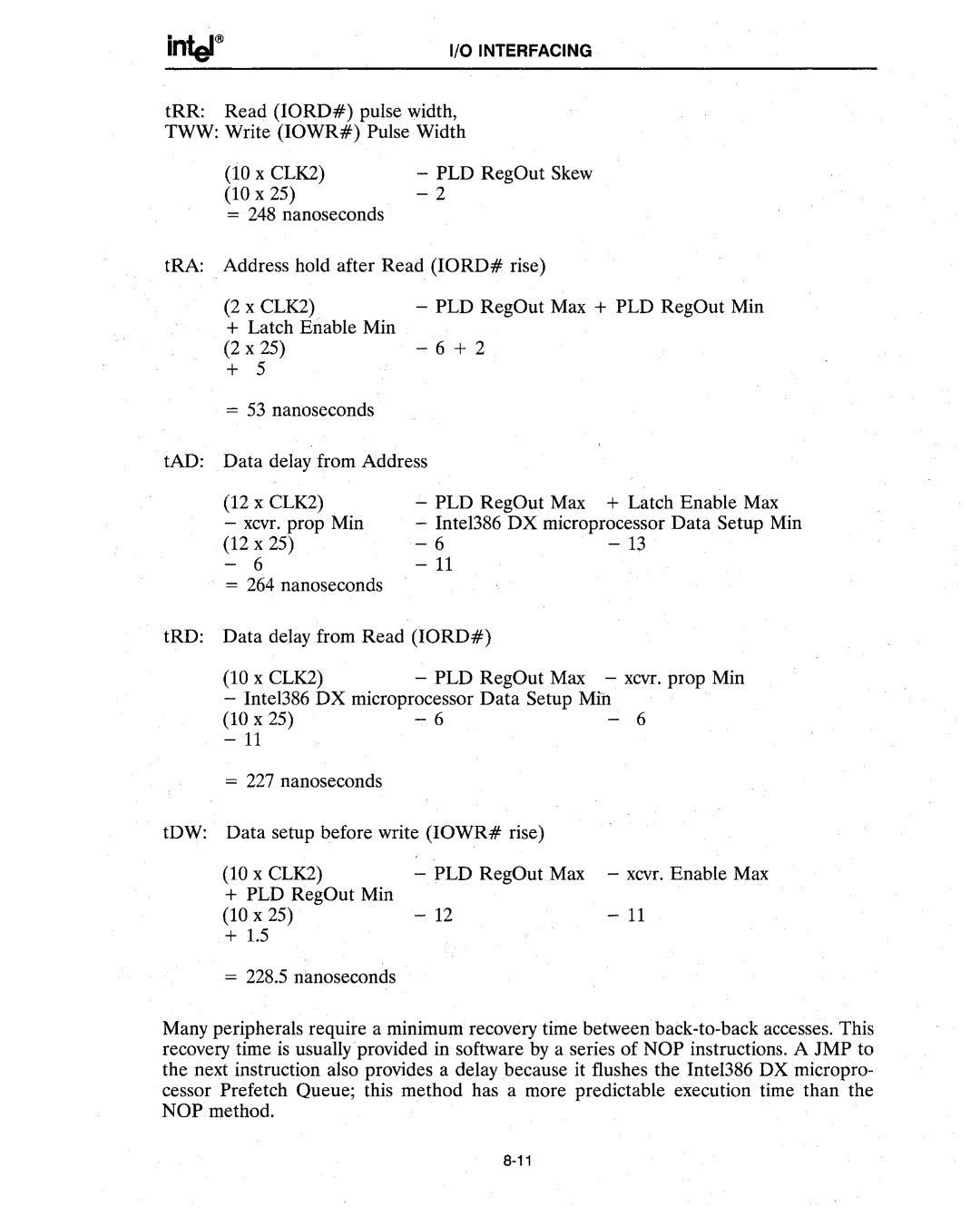
I/O INTERFACING
tRR: Read (IORD#) pulse width,
TWW: Write (IOWR#) Pulse Width
(10 x CLK2) | - PLD RegOut Skew |
(10 x 25) | - 2 |
=248 nanoseconds
tRA: Address hold after Read (IORD# rise)
(2 x CLK2) | - PLD RegOut Max + PLD RegOut Min |
+Latch Enable Min
(2 x 25) | - 6 + 2 |
+5
=53 nanoseconds
tAD: Data delay from Address |
|
| ||
(12 x CLK2) | - | PLD RegOut Max | + Latch Enable Max | |
- | xcvr. prop Min | - | Intel386 DX microprocessor Data Setup Min | |
(12 x 25) | - | 6 | - 13 | |
- | 6 |
| ||
=264 nanoseconds
tRD: Data delay from Read (IORD#)
(10 x CLK2) | - | PLD RegOut Max | - | xcvr. prop Min |
- Intel386 DX microprocessor Data Setup MIn |
| |||
(10 x 25) | - | 6 | - | 6 |
=227 nanoseconds
tDW: Data setup before write (IOWR# rise)
(10 x CLK2) | - PLD RegOut Max - xcvr. Enable Max |
+PLD RegOut Min
(10 x 25) | - 12 | - 11 |
+1.5
=228.5 nanoseconds
Many peripherals require a minimum recovery time between
